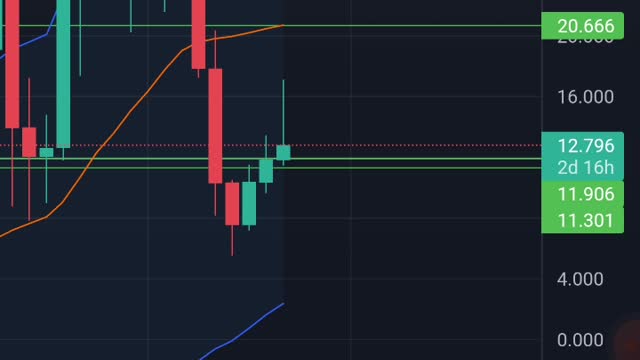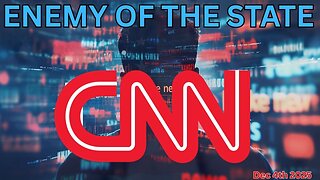Premium Only Content

Why You Should Have ATOM | COSMOS Coin in Portfolio
What Is Cosmos (ATOM)?
In a nutshell, Cosmos bills itself as a project that solves some of the “hardest problems” facing the blockchain industry. It aims to offer an antidote to “slow, expensive, unscalable and environmentally harmful” proof-of-work protocols, like those used by Bitcoin, by offering an ecosystem of connected blockchains.
The project’s other goals include making blockchain technology less complex and difficult for developers thanks to a modular framework that demystifies decentralized apps. Last but not least, an Interblockchain Communication protocol makes it easier for blockchain networks to communicate with each other — preventing fragmentation in the industry.
Cosmos’ origins can be dated back to 2014, when Tendermint, a core contributor to the network, was founded. In 2016, a white paper for Cosmos was published — and a token sale was held the following year. ATOM tokens are earned through a hybrid proof-of-stake algorithm, and they help to keep the Cosmos Hub, the project’s flagship blockchain, secure. This cryptocurrency also has a role in the network’s governance.
Who Are the Founders of Cosmos?
The co-founders of Tendermint — the gateway to the Cosmos ecosystem — were Jae Kwon, Zarko Milosevic and Ethan Buchman. Although Kwon is still listed as principal architect, he stepped down as CEO in 2020. He maintains he is still a part of the project but is mainly focusing on other initiatives. He has now been replaced as Tendermint’s CEO by Peng Zhong, and the whole board of directors was given quite a substantial refresh. Their goals include enhancing the experience for developers, creating an enthusiastic community for Cosmos and building educational resources so greater numbers of people are aware of what this network is capable of.
What Makes Cosmos Unique?
A major concern for some in the crypto industry centers on the levels of fragmentation seen in blockchain networks. There are hundreds in existence, but very few of them can communicate with each other. Cosmos aims to turn this on its head by making this possible.
Cosmos is described as “Blockchain 3.0” — and as we mentioned earlier, a big goal is ensuring that its infrastructure is straightforward to use. To this end, the Cosmos software development kit focuses on modularity. This allows a network to be easily built using chunks of code that already exist. Long-term, it’s hoped that complex applications will be straightforward to construct as a result.
Scalability is another priority, meaning substantially more transactions can be processed a second than more old-fashioned blockchains like Bitcoin and Ethereum. If blockchains are to ever achieve mainstream adoption, they’ll need to be able to cope with demand as well as existing payment processing companies or websites — or be even better.
Cosmos Interchain Accounts Upgrade
The Interchain Foundation, a non-profit organization of the Cosmos ecosystem, announced the release of the Interchain Accounts upgrade on Feb. 17, 2022. Launched in April 2021, the Inter-Blockchain Communications (IBC) protocol is the Cosmos standard for blockchain interoperability. It allows an individual blockchain to control an account on a separate chain. There are 38 projects utilizing IBC currently, notably Terra, Crypto.org chain and Gravity bridge. The Interchain Accounts upgrade will be the largest to the ecosystem since Stargate — which enabled Cosmos blockchains to connect with each other using the standardized protocol for IBC for the first time ever. With Interchain Accounts, users can stake, vote, swap tokens and more on other blockchains. The upgrade serves the purpose of “enabling composability in IBC [which] allows innovation in distinct applications to be deployed without needing to upgrade the entire Interchain.”
-
 LIVE
LIVE
Badlands Media
9 hours agoBadlands Daily: 12/4/25
2,636 watching -
 LIVE
LIVE
Matt Kohrs
11 hours agoLive Trading Stock Market Open (Futures & Options) || The Matt Kohrs Show
650 watching -
 LIVE
LIVE
Wendy Bell Radio
5 hours agoEnemy of the State
7,586 watching -
 LIVE
LIVE
LadyDesireeMusic
20 minutes agoLive Piano Music & Convo
146 watching -
 22:53
22:53
Bearing
3 hours agoABSOLUTE KAREN ANNIHILATION!! 💥 Kaceytron VS Ethan Klein (Lex Jewthor) 💀
5091 -
 13:21
13:21
Upper Echelon Gamers
10 hours agoPrediction Markets - Beating the Experts
2441 -
 1:07:36
1:07:36
Chad Prather
19 hours agoThe Power You Cannot Buy: Motives, Power, and the Making of a True Disciple
59.8K24 -
 LIVE
LIVE
LFA TV
12 hours agoLIVE & BREAKING NEWS! | THURSDAY 12/04/25
3,056 watching -
 1:59:55
1:59:55
The Chris Salcedo Show
12 hours ago $3.54 earnedDispelling Narrative Over Facts On Racism
14.8K2 -
 16:09
16:09
T-SPLY
18 hours agoFederal Agents Arrest Non Citizen Police Officer — Department Hires Him BACK!
40.7K41